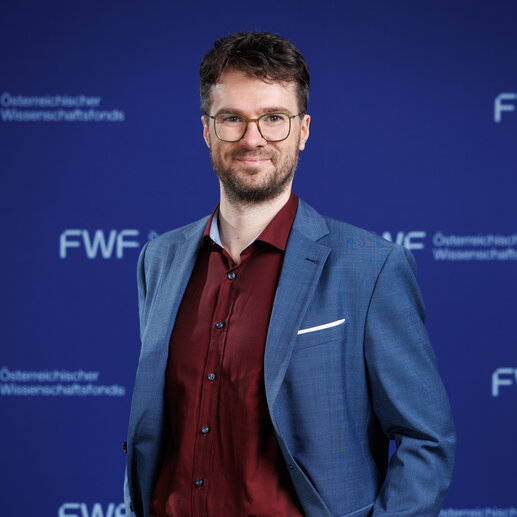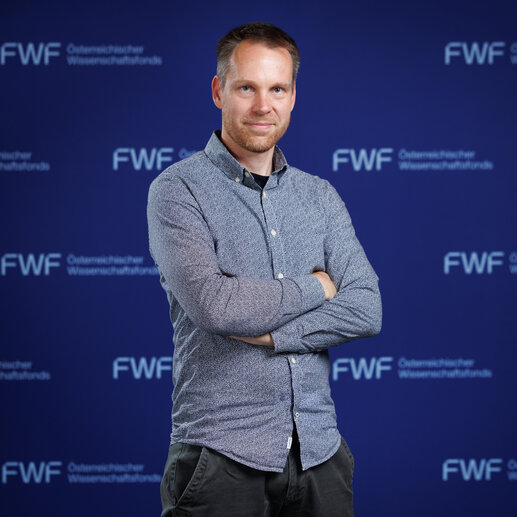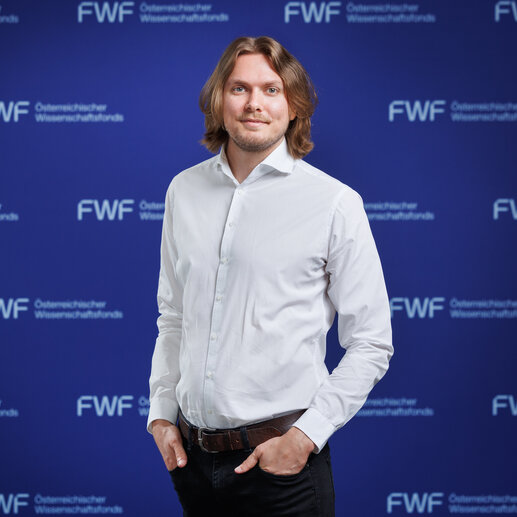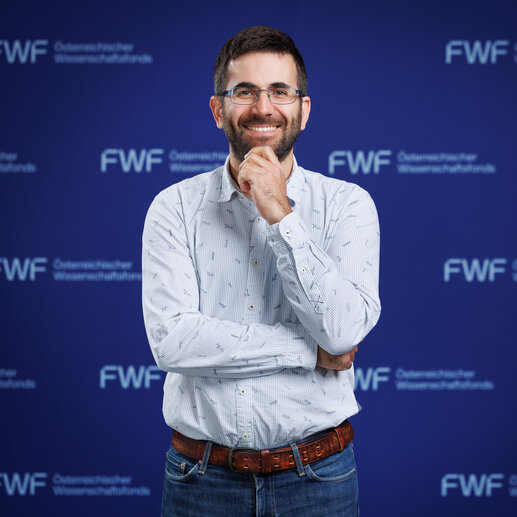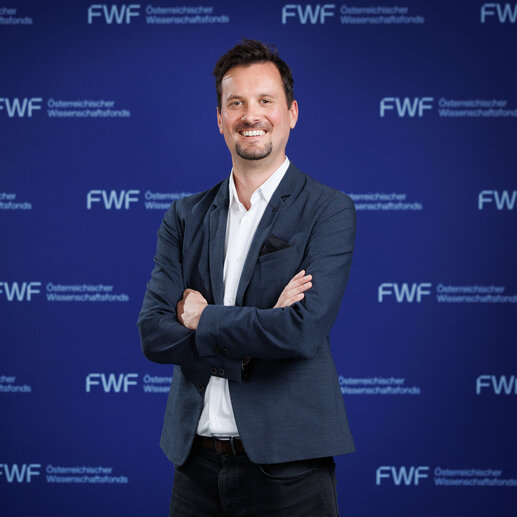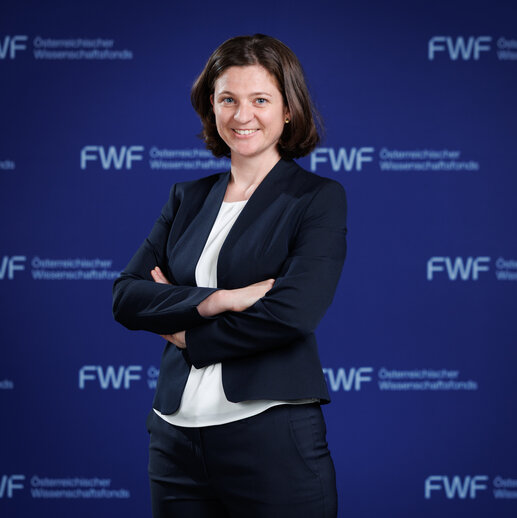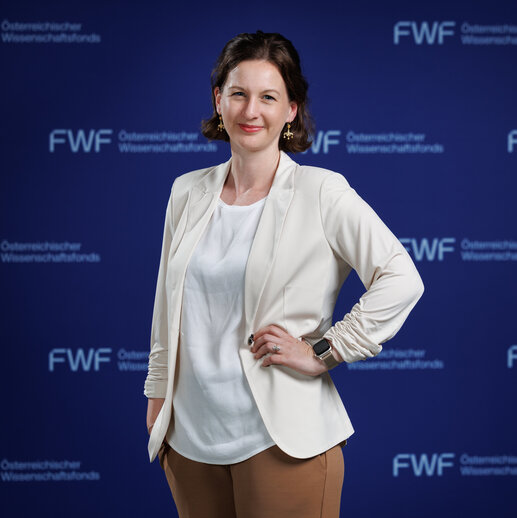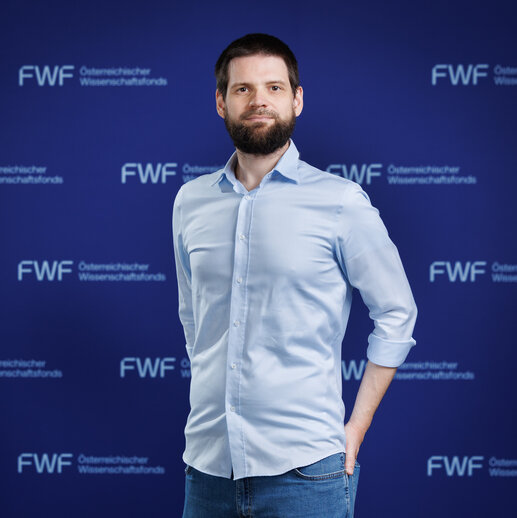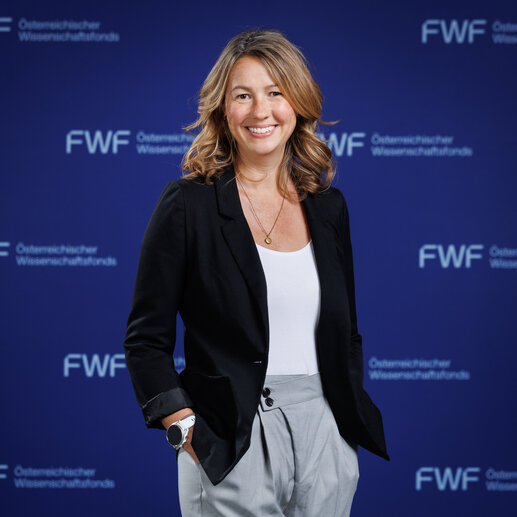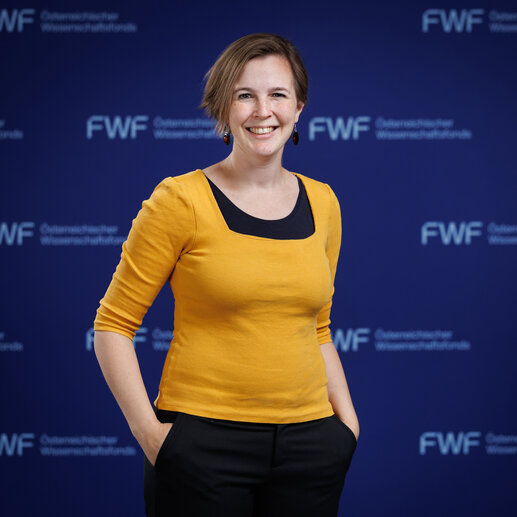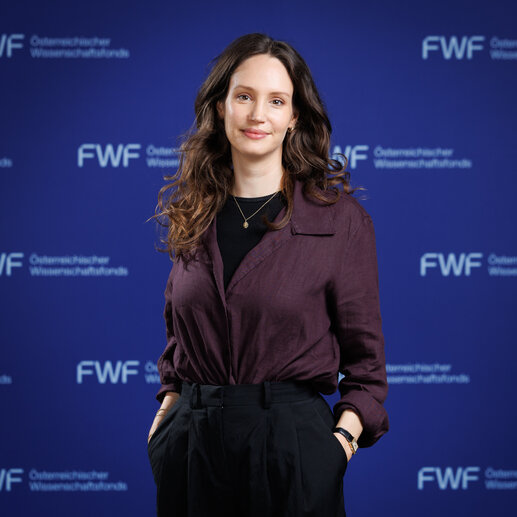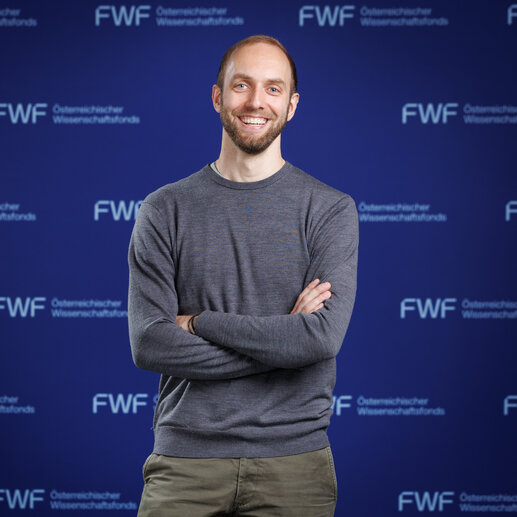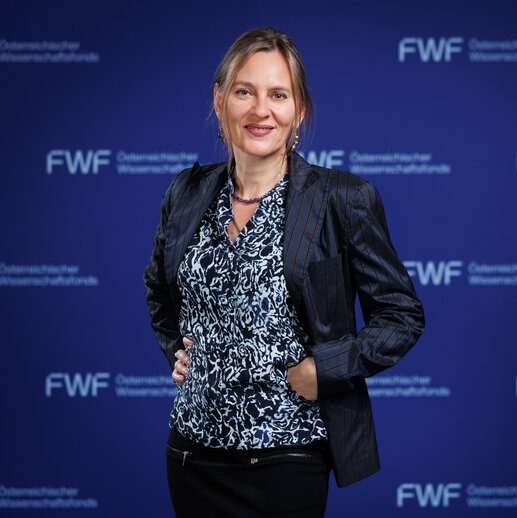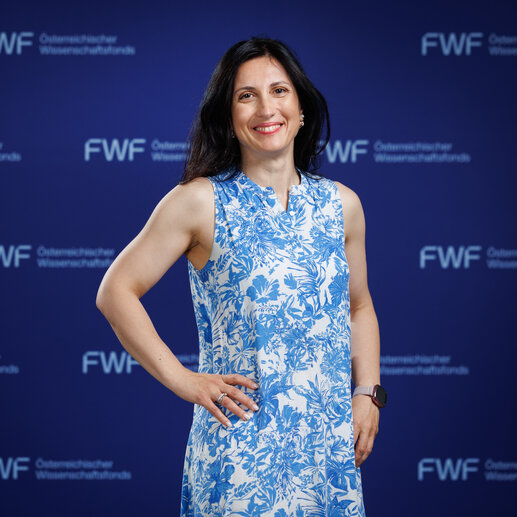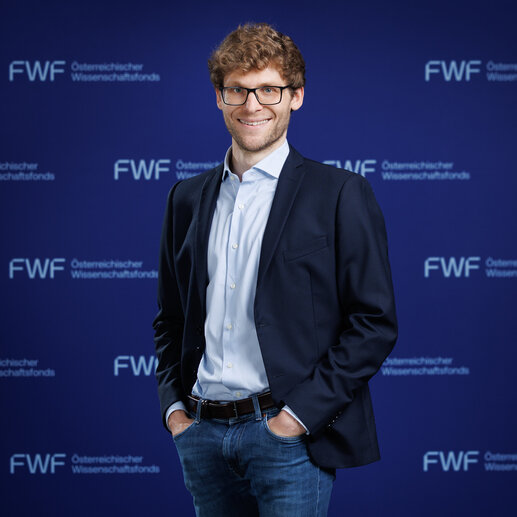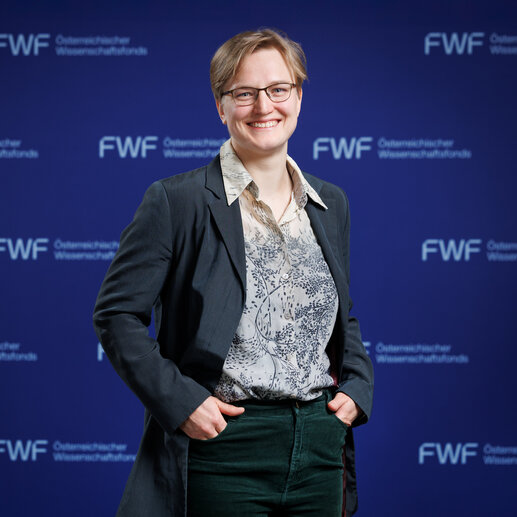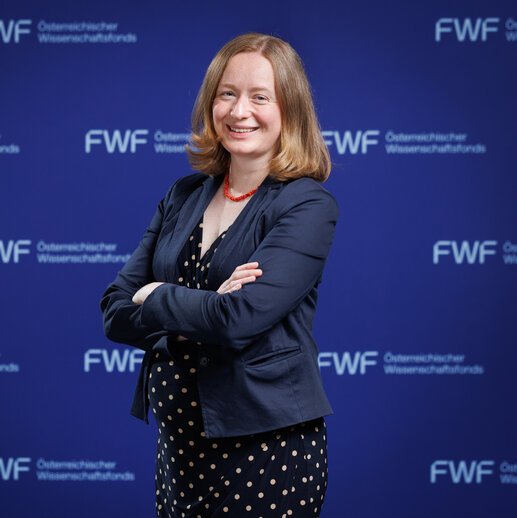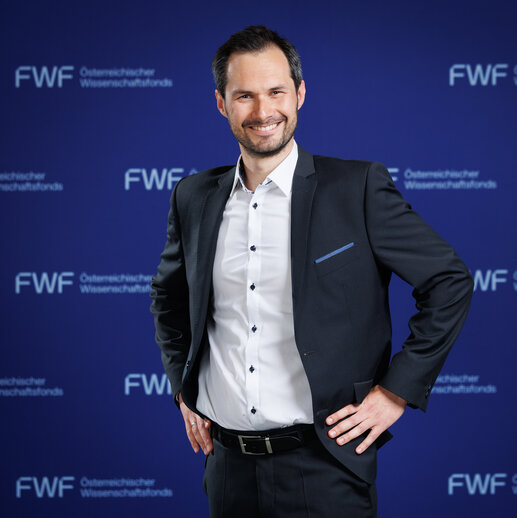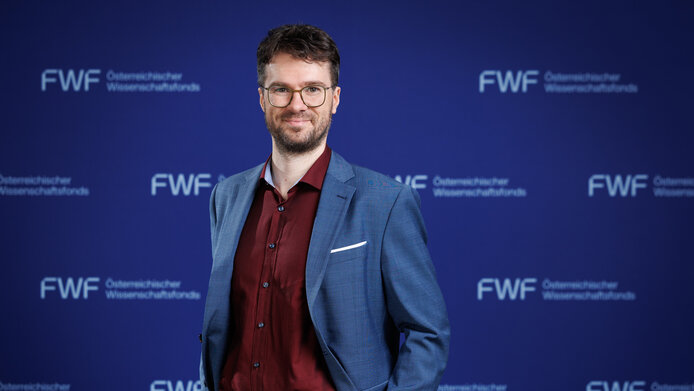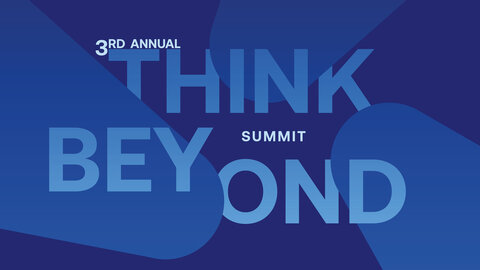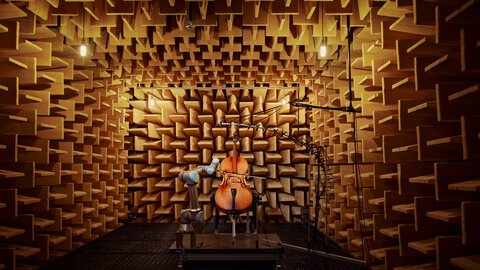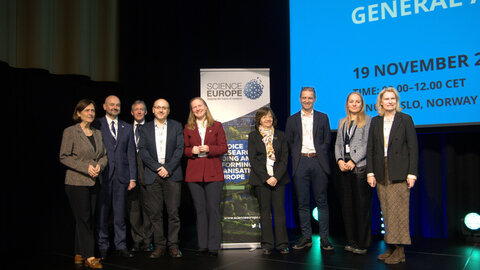Quantum mechanics is widely recognized as one of the most successful theories in the history of science. Yet, even a hundred years after its inception, it is still regarded as mysterious or even incomprehensible. Since its early days, prominent physicists such as Niels Bohr have suggested that quantum mechanics does not describe how external reality evolves over time, but rather that it is a theory about ordering experience. While such ideas are intriguing, they still lack rigorous philosophical-epistemological grounding. Drawing on the phenomenological tradition inaugurated by Edmund Husserl, philosopher Philipp Berghofer aims to provide precisely that: a phenomenological-epistemological foundation for understanding quantum mechanics and, by extension, rethinking the relationship between science and epistemology.
FWF ASTRA Awards: €22 Million For Up-and-Coming Top Researchers
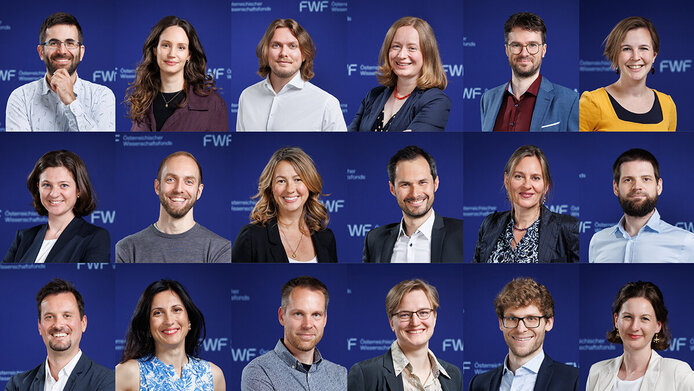
The FWF is presenting 18 scientists, half of whom are women, with an FWF ASTRA Award worth around €1 million each. Their project ideas were selected in a highly competitive selection process involving a hearing before an international jury. The thematic diversity across all areas of basic research is reflected in the distribution by discipline: Roughly one third of the funded projects are in the natural sciences and technology, one third in biology and medicine, and one third in the humanities and social sciences. As a result of this funding decision, three of the 18 researchers will be moving to an Austrian university or non-university research institution as incoming researchers.
The 2025 FWF ASTRA Award winners in alphabetical order:
- Philipp Erwin Berghofer (University of Graz)
- Eric Burton (University of Innsbruck)
- Jan Dreier (TU Wien)
- Alexander Glazman (University of Innsbruck)
- Gernot Grabner (Medical University of Graz)
- Elisabeth Gruber (University of Innsbruck)
- Lisa Isola (University of Vienna)
- András Kraft (Central European University)
- Megan Lambert (University of Vienna)
- Angelika Manhart (University of Vienna)
- Anne Miller (Medical University of Vienna)
- Gerben Oling (TU Wien)
- Bojana Radovanović (University of Graz)
- Silvia Ramundo (GMI – Gregor Mendel Institute of Molecular Plant Biology, ÖAW)
- Daniele Semola (University of Vienna)
- Megan Sørensen (University of Vienna)
- Dagmar Vorlíček (University of Vienna)
- Michael Wallner (TU Wien)
Nine other researchers who qualified for the jury hearing on the basis of their proposals’ outstanding reviews but were not selected to receive an ASTRA Award will be given a Merit Award in the form of reduced funding for their research project. Merit Award funding is equivalent to the funding volume of average FWF projects. The Merit Award winners are: Federico Battiston (Central European University), Eduard Fadeev (University of Vienna), Verena Fuchsberger-Staufer (University of Salzburg), Kateryna Golovina (Austrian Academy of Sciences), Gerhard Jung (University of Innsbruck), Katharina Lust (University of Vienna), Simon Vitecek (University of Innsbruck), Fangyuan Yang (TU Wien), and Yvonne Zivkovic (University of Graz).
The FWF had total of 217 research proposals reviewed for the first round of ASTRA Awards. As part of the program reform, the FWF is increasing the total amount of funding for these highly competitive career grants to €22 million, giving more researchers from a broader range of topics access to funding, and with a more balanced participation by women.
Eric Burton
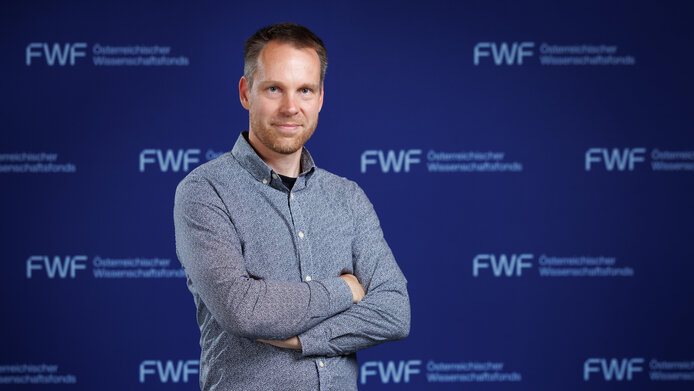
Coloniality in the Alps: Rethinking Tyrol's global entanglements
The project Provincializing Coloniality reinterprets the complex history of 20th-century Tyrol through a decolonial lens, demonstrating how regions lacking colonial ties and located far from imperial capitals were nevertheless integral to the network of imperial relationships. Historian Eric Burton examines local cultural practices, institutions such as colonial goods stores, or settler colonialism, as well as forms of transnational solidarity and political interventions opposing colonialism and apartheid. Drawing on archival research and oral history interviews, the project, with its focus on provincial coloniality, highlights Tyrol's transnational dimensions and opens up new perspectives for a productive and context-sensitive interweaving of regional and global history.
Jan Dreier
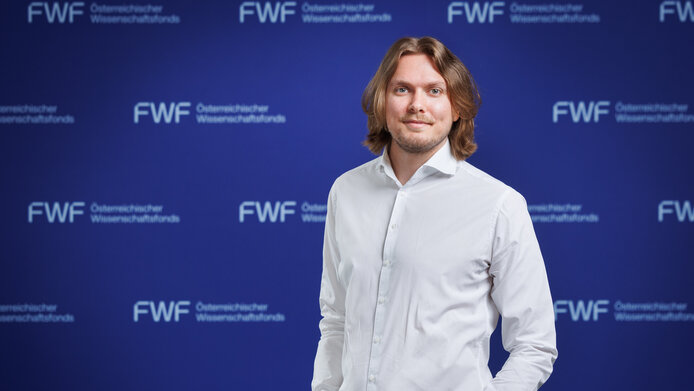
Understanding networks, simplifying algorithms
Computer programs often struggle with the immense complexity and diversity found in modern data networks. With his project UNISTRUC, computer scientist Jan Dreier seeks to uncover the underlying principles governing these networks, ranging from road systems to social networks. By integrating two leading theoretical approaches - sparsity and twin-width - into a unified framework, the project offers new insights into network structures. Together with his team, he will be developing innovative methods to break down even seemingly chaotic structures into clear, manageable components. In doing so, UNISTRUC creates important connections between logic, combinatorics, and algorithm design, laying the groundwork for more efficient and powerful computer programs in the future.
Alexander Glazman
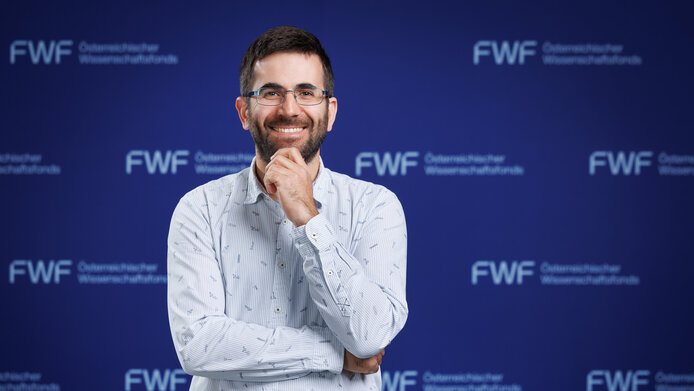
Exploring the geometry of phase transitions
Statistical physics models are large systems of interacting particles. These models describe phase transitions that appear in various sciences. The aim of mathematician Alexander Glazman's project is to determine these transitions and the models' exact behavior at transition points. Specifically, the focus is on the geometry of interfaces separating different states in two-dimensional systems. The goal is to reveal emergent symmetries in the limiting case through random fractals. The main idea is to find a universal structure underlying many different models.
Gernot Grabner
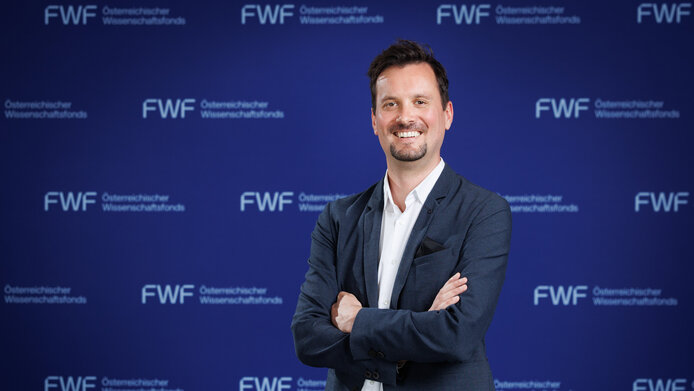
Discovering new ways to treat liver disease
Liver steatosis is characterized by an excess fat content in the liver and affects 25% of all people. It is a major cause of progressive liver disease, which can eventually lead to cirrhosis, cancer, and organ failure. A mutation in a gene named PNPLA3 drastically increases the risk for the development and progression of liver steatosis. Previous attempts to understand PNPLA3's role in the disease have been limited by a lack of specific experimental tools and suitable models. In this ASTRA project, Gernot Grabner and his team will develop new chemical tools to clarify the function of PNPLA3 in human model systems. Understanding how PNPLA3 drives liver damage will open up new ways to prevent and treat progressive liver disease.
Elisabeth Gruber
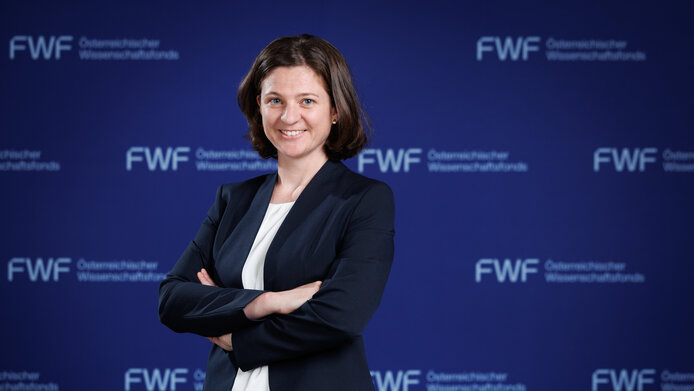
Bringing the chemistry of the universe into the laboratory
The interstellar medium, the vast space between stars, is a cosmic laboratory with a complex chemistry. It consists of gas and dust, mainly concentrated in clouds and nebulae exposed to cosmic radiation. Here, molecules, atoms, ions, electrons, and photons interact, forming new molecules, from simple diatomic compounds to more complex organic compounds. In her project, physicist Elisabeth Gruber recreates these extreme conditions in the lab using helium nanodroplets - tiny, ultracold clusters of helium atoms. Within them, atoms and molecules are trapped and cooled, enabling controlled interactions and the formation of larger systems. She applies and develops advanced experimental techniques to study these molecules and their reaction pathways. By mimicking space chemistry at the molecular level, this project will identify molecular ions and reveal their reaction pathways, offering insights into the chemical complexity of our universe.
Lisa Isola
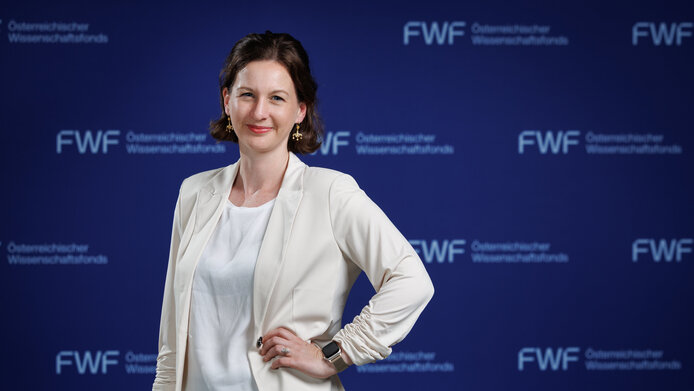
Revisiting private law from a historical-comparative perspective
The Austrian Civil Code (ABGB) of 1811, along with the French Code Civil of 1804, is one of the two longest-serving civil law codifications in the world. About a third of its provisions and its structure still correspond to the original version. These are the result of careful preparation and comparative legal considerations, which took into account various historical sources as well as different legal traditions within the Habsburg Empire. Over time, the origins of individual provisions have been forgotten. In her project, Lisa Isola will uncover these roots and analyze how they were affected by later influences.
András Kraft
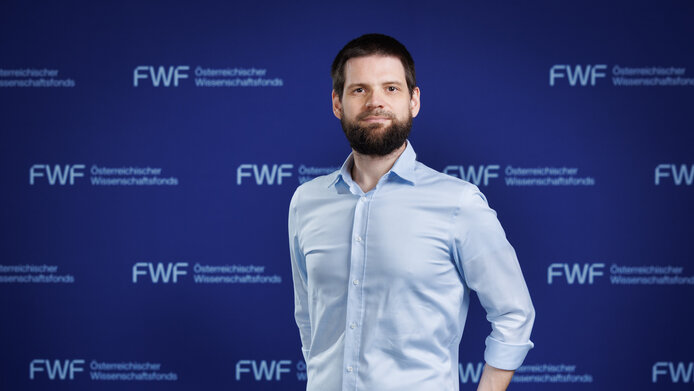
Apocalypse rescripted: Unraveling the maze of Byzantine apocalyptic literature
The Eastern Roman Empire featured an apocalyptic literary tradition that was diverse, dynamic, and definitive. Drawing on the current state of scholarship and on recent advances in digital humanities, the project will conduct the first comprehensive assessment and analysis of apocalyptic literature from the Byzantine millennium (c. 500-1500 CE) as it survives in Greek, Armenian, and Slavonic textual variants. András Kraft and his team will be examining a literary corpus of 40 Byzantine texts in manuscript form. By applying a multidisciplinary approach from a transregional perspective and aided by digital tools, the project goes beyond the fragmented study of individual texts and motifs, conducting a holistic analysis of medieval apocalypses.
Megan Lambert
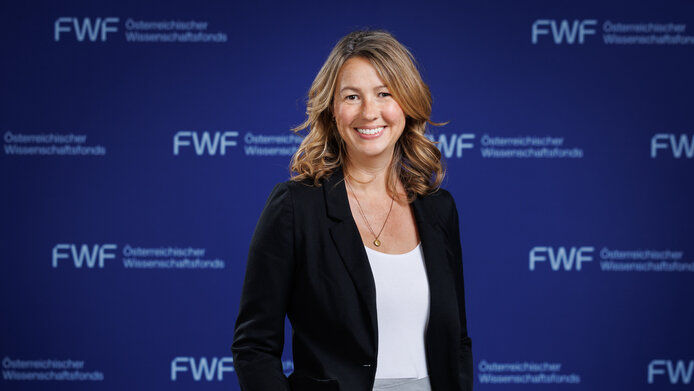
Unlocking animals' innovative responses to change
How do animals come up with new solutions to unfamiliar challenges? In her project, Megan Lambert is investigating when and how birds innovate - a behavior important for coping with change, yet whose immediate drivers are not fully understood. Focusing on two notoriously inquisitive bird species, the kea parrot and the striated caracara, she and her team will be exploring which traits support innovation, when innovations are likely to arise under natural conditions, and how these new behaviors spread. Understanding these processes is important for revealing how behavior, cognition, and context shape animals' responses to environmental change - and how we can best support their conservation.
Angelika Manhart
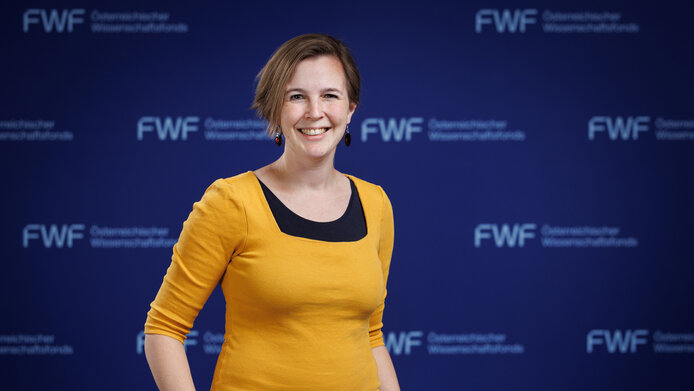
Unraveling the secrets of cell coordination
What happens when cells move as a group? Why are cancer cell clusters more successful at metastasizing than single cells? In her interdisciplinary project, Angelika Manhart investigates the science of cell coordination. She combines mathematical modeling & simulation with experiments to explore how cell properties, their environment, and cell-to-cell communication shape collective behavior. While relevant to processes like fetal development and wound healing, Manhart's work focuses on how cancer spreads, using cells from breast cancer patients. With this powerful combination of approaches, the project aims to uncover why moving as a team might give cells a crucial advantage.
Anne Miller
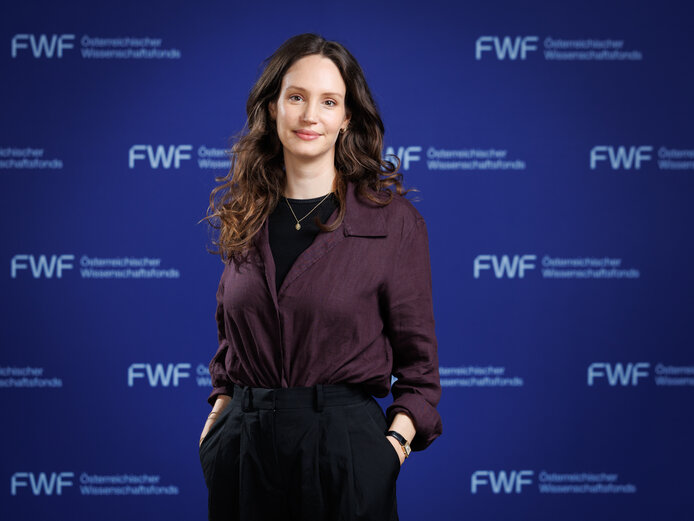
Exploring the spatial architecture of biochemical reactions
To function properly, cells must distribute their biochemical reactions across different subcellular compartments. Textbooks describe mitochondria as the "powerhouse" of the cell and the nucleus as a metabolically inactive genetic center. In this research project, biochemist Anne Miller and her team are challenging this widely held view. She has found evidence that metabolic reactions also occur within the nucleus and may influence key cellular decisions. Using liver regeneration as a model, the team will be exploring which metabolic pathways are active in the nucleus and how they control gene regulation. To achieve this, they are developing new methods that allow researchers to visualize and manipulate biochemical processes with high spatial resolution. This work has the potential to fundamentally reshape our understanding of the cellular metabolism.
Gerben Oling
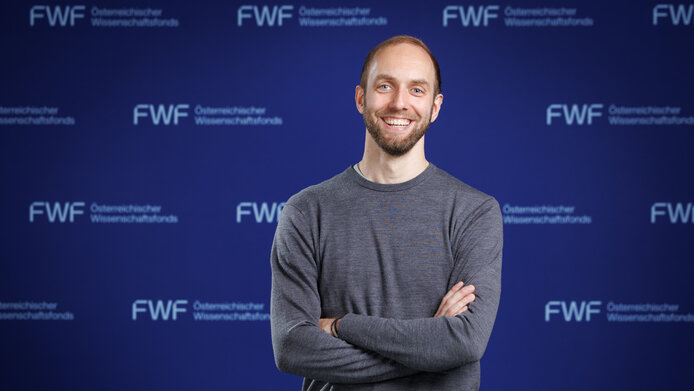
Exploring beyond the horizon of black holes
What happens when you fall into a black hole? These fascinating objects arise in Einstein's theory of general relativity, which combines space and time into a single geometric object we call 'spacetime'. Black holes have an event horizon, where not even light can escape. We don't know much about what happens if you travel beyond this horizon, but physicists have long suspected that spacetime will be squeezed and stretched increasingly rapidly as the gravitational forces continue to grow. In this project Gerben Oling will use new geometric techniques to understand Einstein's theory in this challenging regime and will also connect these questions to the holographic principle, which allows us to translate questions about black holes to a very different part of physics described by quantum mechanics.
Bojana Radovanović
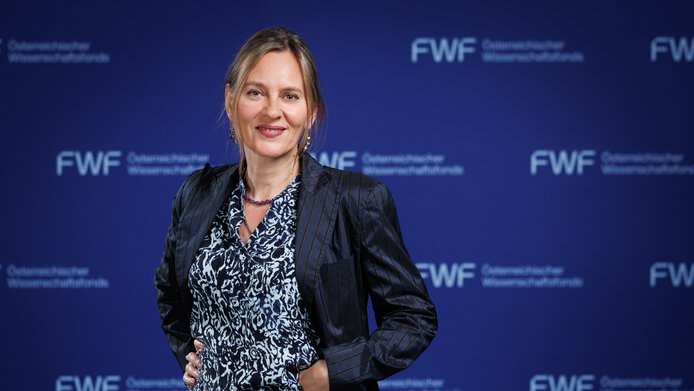
Exploring hidden religious traditions in Southeast Europe
In her project, historian Bojana Radovanović explores lesser-known religious traditions in Southeastern Europe, focusing on the areas faith, folklore, and history overlap. Tracking heresy, pre-Christian beliefs, and gendered ritual practices, contextualized in geographic scenery, her research offers a fresh, inclusive perspective on the region's complex past. Using a cross-disciplinary approach, the project connects local religious dynamics to wider European and global contexts. The project also aims to bridge linguistic, academic, and conceptual divides between Eastern and Western Europe, contributing to a more integrated understanding of the region's shared cultural heritage.
Silvia Ramundo
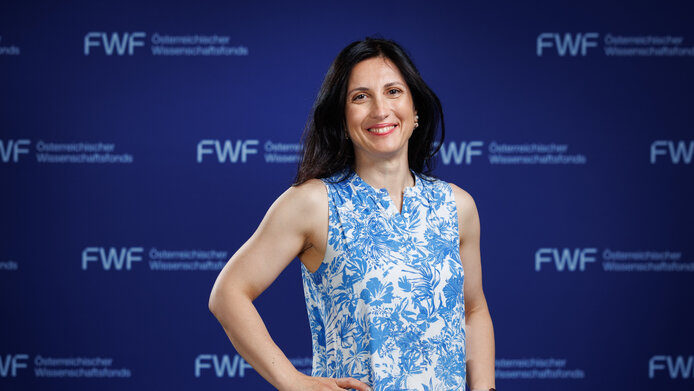
Discovering the silent signals that keep plants green
Over a billion years ago, a tiny bacterium that could use sunlight to turn water and carbon dioxide into sugars and oxygen was swallowed by another cell. Instead of being digested, it stayed – and became the chloroplast. From that remarkable partnership, green algae and plants evolved, creating the ecosystems we rely on today. But chloroplasts live in a delicate balance: the same sunlight that powers them can also damage them when in excess. When that happens, they send molecular distress signals to their host cell. Silvia Ramundo and her team are working to understand what these signals are and how they trigger a targeted rescue response. Why? Because chloroplasts don’t just keep plants and algae alive – they keep our planet green, our air breathable, and life itself in motion.
Daniele Semola
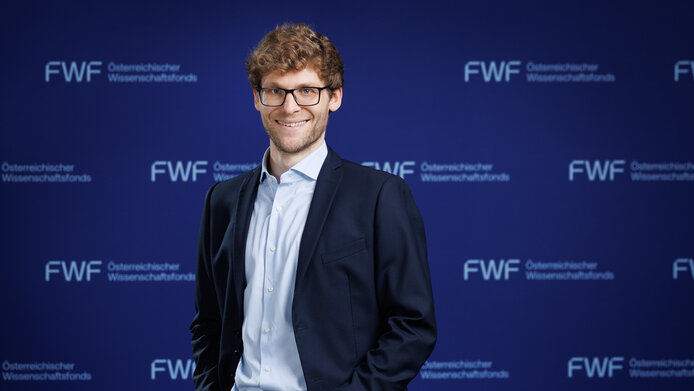
Exploring the geometry of manifolds
The Ricci curvature is a way of measuring the distortion of a space from a flat surface. It is ubiquitous in mathematics and the natural sciences. Despite being a quantity that can be measured locally, it provides global information on the shape of an observed space. The goal of Daniele Semola's project is to address some of the long-standing open questions on the Ricci curvature, thus improving our understanding of the shape of spaces with a Ricci curvature bounded from below.
Megan Sørensen
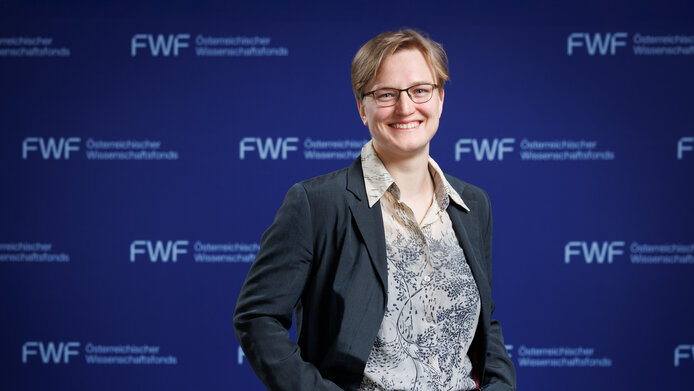
Understanding how microbial partnerships have shaped evolution
Organisms interact with one another constantly, and occasionally form tightly integrated partnerships. These partnerships have been critical in the evolution of life and play important roles in ecosystems. In her project, Megan Sørensen seeks to uncover how these vital partnerships evolved. To achieve this, this project will study microbial partnerships that are at critical tipping points along this evolutionary process. Sørensen will be studying molecular integrations between the microbial partners at every level of their cell biology. Methods will range from cutting-edge technologies that visualize molecules within a single cell to field sampling that will monitor these organisms in nature. Ultimately, this project will help uncover fundamental evolutionary processes that have shaped, and continue to shape, life on earth.
Dagmar Vorlíček
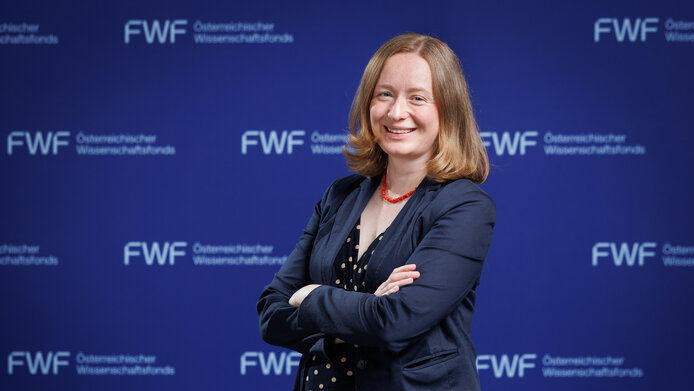
Exploring overlooked histories of security innovations
In her project, social scientist Dagmar Vorlíček explores how expertise inherited from the past can be adapted for changing political and security conditions. The project investigates different pathways of reinventing expertise from the Cold War until today, and studies the histories of science diplomacy in Austria, biodefence in Czechia, and cybernetics in Estonia. Through innovative methodology focusing on the transformation of expert ideas, tools, and networks, this work will help us understand how security politics shape scientific research, and vice versa. By doing so, it will provide insights into overlooked legacies from the past and pave the way for exploring innovative ways to address new and emerging security threats.
Michael Wallner
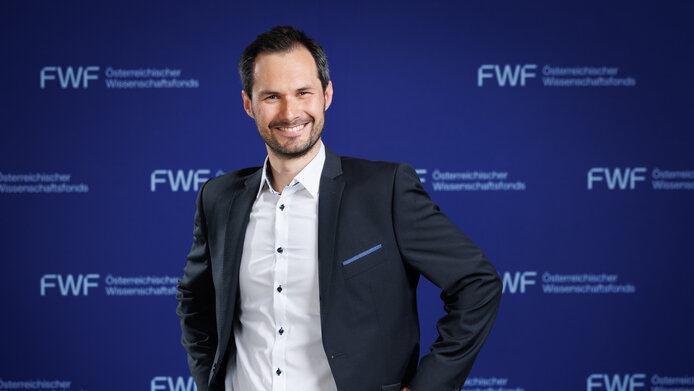
Understanding the behavior of large mathematical structures
Discrete mathematical structures are omnipresent in our modern world. These range from data structures and network graphs in computer science to phylogenetic trees in biology. While we are interested in their typical properties, we often cannot even count them. In his project, mathematician Michael Wallner will explore the challenges in recursive counting problems of discrete structures. These phenomena are characterized by the fact that many structures are influenced by only a few global properties, independent of concrete details. His ultimate goal is to develop a unified theory of phenomena that have previously only been observed separately, using methods from combinatorics, complex analysis, and probability theory.
